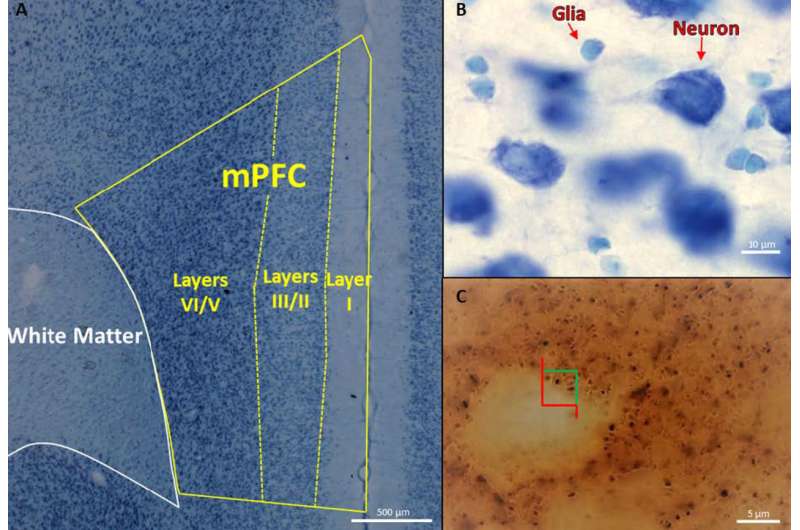In rats, perinatal exposure to phthalates impairs brain structure and function

Male and female rats exposed in the womb and during lactation to plasticizing chemicals known as phthalates had significantly fewer neurons and synapses than those that were not exposed, researchers report in a new study. The phthalate-exposed rats had reductions in the size of their medial prefrontal cortex, a brain region that regulates behavior, and showed deficits in cognitive flexibility.
The variety of phthalates and quantities used in the study were environmentally relevant to human exposures, said University of Illinois psychology professor Janice Juraska, who led the research.
"Phthalates are used as plasticizers in a variety of consumer goods, including plastics, personal care products, fragrances, pharmaceuticals, clothing and building materials," she said. "Contact with these products can lead to exposure through the skin, digestion or lungs."
Research has shown that phthalates readily cross the placenta to expose a developing fetus, and that they can be delivered to offspring via lactation, Juraska said. Because these chemicals can disrupt normal hormone signaling, their presence in infants and children is of special concern. The developing brain, in particular, is susceptible to hormone disruptions. Several studies in humans suggest that prenatal phthalate exposure may negatively affect children's behavior, their ability to regulate their own actions and the incidence of neuropsychiatric disorders, she said.
The pregnant rats in the study were each assigned to one of three groups—two of which were exposed to differing concentrations of phthalates during pregnancy and lactation, and one, a control group, that was not exposed at all. The researchers tested how well the offspring learned to use visual and textural cues to navigate a maze, and examined the relative development of their brains once they reached adulthood.
"We found that there was an appreciable reduction in the number of neurons, the number of synapses and the size of the medial prefrontal cortex in the phthalate-exposed rats," Juraska said. "They also showed a deficit in what we call cognitive flexibility. They made significantly more errors when navigating the mazes than rats that had not been exposed."
The negative effects of perinatal exposure to phthalates were seen at both doses of the phthalate mixture, the researchers report, which were "presumably within the range of the estimated daily intakes of humans."
More information: Daniel G. Kougias et al, Perinatal exposure to an environmentally relevant mixture of phthalates results in a lower number of neurons and synapses in the medial prefrontal cortex and decreased cognitive flexibility in adult male and female rats, The Journal of Neuroscience (2018). DOI: 10.1523/JNEUROSCI.0607-18.2018














